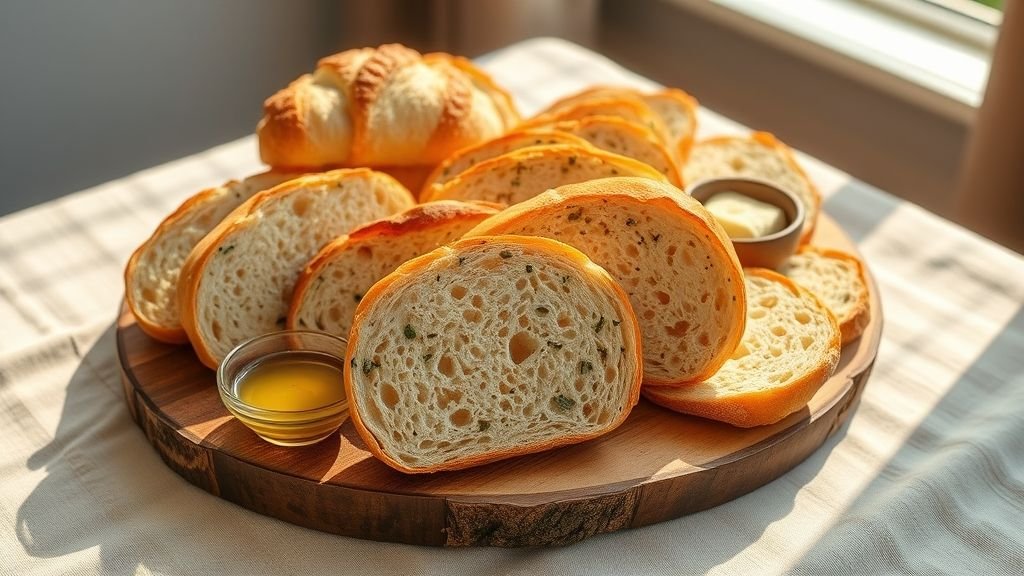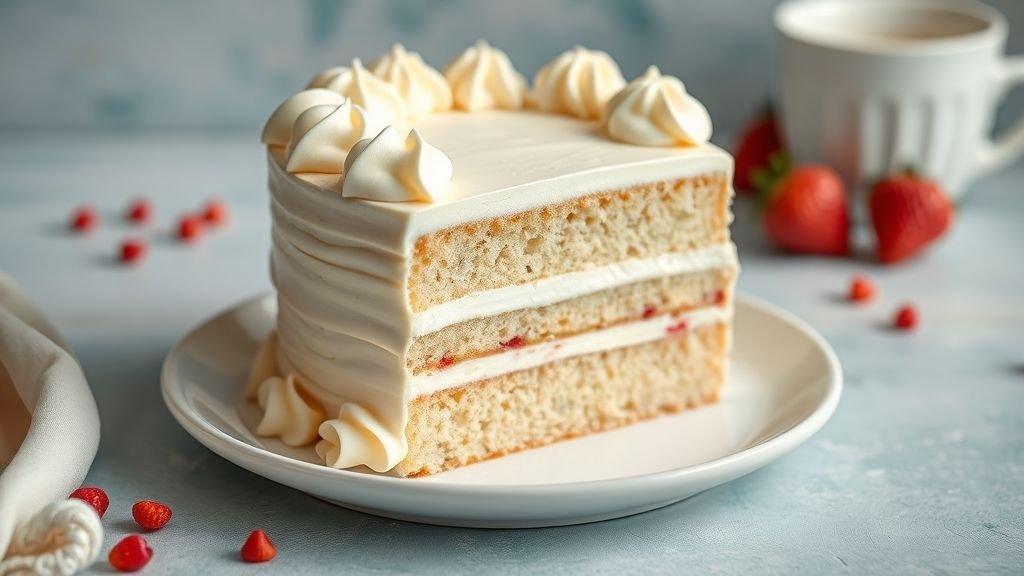
Nothing quite like the smell of freshly baked bread wafting through your kitchen. But for those avoiding gluten, whether due to celiac disease, sensitivity, or lifestyle choices, that warm, crusty loaf can feel out of reach. The good news? A great gluten free bread recipe isn’t just possible—it’s delicious, rewarding, and surprisingly simple once you know the ropes.
The days are gone when gluten-free bread meant dry, dense, or oddly textured loaves. Today, with a few ingredient tweaks and techniques, you can bake a soft, airy loaf with a golden crust that rivals any traditional recipe.
Here you’ll learn how to bake gluten free bread from scratch, what ingredients make the magic happen, and which techniques ensure perfect results every time. Whether you’re brand-new to gluten-free baking or just tired of store-bought loaves, this guide will change the way you think about gluten-free bread forever.
Why Gluten-Free Bread? Understanding the Rise
Let’s start with the big picture. Why are so many people turning to gluten free bread?
According to a 2023 Statista survey, nearly 15% of Americans report avoiding gluten in their daily diet, either because of a diagnosed condition like celiac disease or because they believe it contributes to better digestion and energy levels.
Reasons people choose gluten-free bread:
-
Celiac disease: An autoimmune reaction to gluten that affects about 1% of the population.
-
Non-celiac gluten sensitivity: Causes symptoms like bloating, fatigue, and brain fog.
-
Health trends: Many find gluten-free eating supports their wellness goals.
Whether for necessity or choice, demand for gluten-free options has surged—and with it, the quality of recipes and products. Still, nothing beats the taste and satisfaction of baking your loaf at home.
The Secret to Great Gluten-Free Bread: Ingredients Matter
If you’ve ever asked, “How to bake gluten free cake?” you’ll know the answer often starts with flour. The same is true for bread. Because there’s no gluten to create structure, you need a smart mix of ingredients to replicate that chewy, bouncy texture.
Key Ingredients for Gluten-Free Bread:
-
Gluten-Free Flour Blend: Use a high-quality all-purpose gluten-free flour. Brands like King Arthur and Cup4Cup make blends designed for bread baking. Look for versions that include:
-
Brown rice flour
-
Sorghum flour
-
Potato starch
-
Tapioca starch
-
-
Binders (Xanthan Gum or Psyllium Husk): These help mimic gluten’s elasticity. Psyllium husk, in particular, helps create a soft, springy crumb.
-
Yeast: Active dry yeast or instant yeast will provide that classic rise and flavor.
-
Liquids (Warm Water or Milk): Gluten-free flours absorb more liquid, so recipes usually call for more hydration.
-
Fat: Olive oil, butter, or plant-based alternatives keep the loaf moist.
-
Sweetener (Optional): Honey or maple syrup feeds the yeast and adds a touch of flavor.
Pro tip: If your dough looks more like thick batter than traditional dough, don’t panic! Gluten-free bread doughs are often wetter by design.
How to Bake Gluten Free Bread: Step-by-Step Recipe
Let’s get to the main event—a gluten free bread recipe that’s simple, forgiving, and utterly satisfying.
Ingredients:
-
3 cups gluten-free all-purpose flour (with xanthan gum)
-
2 tsp instant yeast
-
1 tbsp psyllium husk powder
-
1 ½ tsp salt
-
1 tbsp honey or sugar
-
1 ½ cups warm water (110°F)
-
3 tbsp olive oil
-
2 large eggs, room temperature
Instructions:
-
Activate the Yeast: Mix warm water, honey, and yeast in a bowl. Let sit for 5–10 minutes until bubbly.
-
Mix Dry Ingredients: In a separate bowl, whisk flour, psyllium husk, and salt.
-
Combine Wet and Dry: Add eggs and olive oil to the yeast mixture, then slowly mix in the dry ingredients. The batter will be sticky and thick.
-
Let it Rise: Pour into a greased loaf pan. Smooth the top with a spatula. Cover and let rise in a warm place for 45–60 minutes, or until it has nearly doubled in size.
-
Bake: Preheat oven to 375°F (190°C). Bake for 35–40 minutes until golden brown and the internal temperature reaches 200°F.
-
Cool: Let cool in the pan for 10 minutes, then transfer to a rack to finish cooling. Slice once fully cooled.
Common Mistakes (and How to Avoid Them)
Learning how to bake gluten free cake or bread means facing a few learning curves. Here are the top mistakes and how to fix them:
Mistake #1: Treating Gluten-Free Like Regular Dough
Solution: Don’t knead! There’s no gluten to develop. Mix until combined, then let it rise.
Mistake #2: Not Measuring Precisely
Solution: Use a digital kitchen scale. Gluten-free baking is more sensitive to measurement differences.
Mistake #3: Skipping the Binders
Solution: Always include xanthan gum, psyllium husk, or a comparable substitute for structure.
Customizing Your Gluten-Free Bread

One of the joys of baking your bread is making it your own. Once you master the base recipe, it’s easy to tweak and enhance.
Add-Ins:
- Seeds & Nuts: Try chia seeds, sunflower seeds, or walnuts.
- Herbs & Spices: Rosemary, thyme, garlic powder.
- Dried Fruit: Raisins, cranberries, chopped apricots.
Bread Variations:
- Gluten-Free Dinner Rolls: Divide the dough into portions and bake in a muffin tin.
- Artisan-Style Loaf: Shape and bake on a parchment-lined tray for a rustic crust.
- Sweet Bread: Add cinnamon and a swirl of honey or jam for a breakfast-style bread.
Original Insight: Hydration Is Key
Here’s a tip that even seasoned bakers overlook—hydration is everything in gluten-free bread. A 2022 report from the American Culinary Federation notes that the ideal hydration level for gluten-free dough is around 90–100%, compared to 60–70% in traditional doughs.
This high water ratio leads to better rise, softer texture, and longer shelf life. Don’t be afraid of a wetter dough—it’s the secret to success.
Final Words
Making gluten free bread at home doesn’t have to be intimidating. With the right ingredients, a reliable recipe, and a few insider tips, you can create loaves that are soft, delicious, and endlessly customizable.
Whether you’re eating gluten-free by necessity or choice, this recipe puts the power back in your hands—and the aroma of real bread back in your kitchen.
Try this recipe today and experience the difference of homemade gluten-free bread.
FAQs
Q: Can I make this recipe egg-free or vegan?
Yes! Replace eggs with flax eggs (1 tbsp flaxseed meal + 3 tbsp water per egg) and use plant-based milk.
Q: Why didn’t my bread rise?
Double-check the yeast (make sure it’s fresh) and ensure the rising spot is warm enough (75°F–85°F works best).
Q: How do I store gluten-free bread?
Wrap tightly and store at room temperature for 2–3 days or refrigerate for up to a week. Freeze slices individually for a longer shelf life.
Q: How to bake gluten free cake using similar techniques?
Start with moisture-rich ingredients, use a flour blend with binders, and don’t skip the resting time before baking. Cakes, like bread, benefit from hydration and structure-building techniques.


